Creating a Destination Patio in the Forest
This destination patio in the forest post is sponsored by Troy-Bilt. Thank you for supporting the brands that provide support for our blog. We hope you’re inspired.
We’re collaborating with Troy-Bilt to build a destination patio in the woods. If you’ve been watching our Instagram Stories, you’ve seen our progress over the past few weeks. This project has been in our minds for a few years, but last summer, we knew we had to make it a reality sooner than later. Like the rest of the world, our lives have been dramatically changed because of Covid. We spent more time outside working in the garden and entertaining outside than ever before this past spring and summer. In the summer when the Covid numbers were really low we felt very comfortable having friends and neighbors over outside while being socially distanced. It was such a treat to see humans and interact! We took safety measures to make sure everyone was comfortable (I always want to be a good host). Knowing the pandemic will likely affect us into the fall, we want to be able to entertain in the mean time. We’re going to build an outdoor space and use good design to make that happen. We’re also rethinking what entertaining means in a pandemic (more on this later).
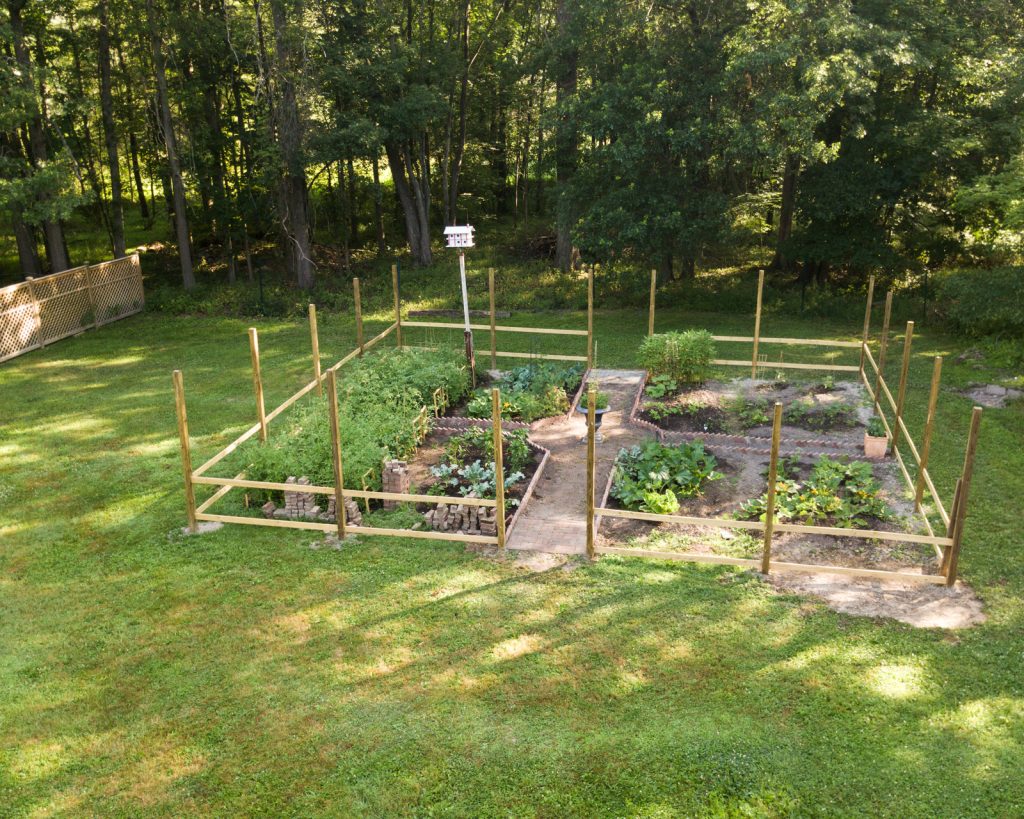
I really thought doing this outside in the winter was going to be cold and a crazy thing to take on. (We’re in the lower Hudson Valley in New York.) We figured it’s a pandemic, let’s try something new! And we wanted to start this now for our mental health. In colder climates, if you don’t ‘go’ somewhere in the winter, you don’t leave your house. I’m super social and not going anywhere or socializing has been stressful. I took a lot of pleasure and found stress relief in gardening this past spring and summer. Finishing projects feels good – we started this project last spring and it got too hot and complicated to finish it in warmer weather. Working in the cold weather has been really productive and something we’d do in the future. No bugs (ticks!) or poison ivy to deal with. We avoid taking down large trees in the spring because… baby birds and little nests. The area we’re working in is ‘patroled’ three times a day by our dog, Sugar. It’s good because it discourages animals from making a home in the brush.
To-Do List
I love a good list! We make lists like crazy for renovation projects (and revise them six times as the project progresses). First, we have a design plan which I’ll share below. It’s winter, so this design sets the foundation for immediately using this space. We have two phases, clean up the area and install the patio.
Phase 1: Clean Up
- Cut down trees
- Chip massive pile of sticks from the last 7 years
- Rake leaves and small sticks, put through chipper
- Use trimmer mower to remove brush, including Multi Flora Rose
- Add wood racks so we can stack firewood for a wall
Phase 2: Install Patio
- Outline Patio Area
- Lay path
- Add Pea Gravel
- Add additional stones or bricks
- Place existing rocks to start building a landscape
- Add fire pit and cold weather entertaining style
Design
The concept for this project is a “Destination Patio in the Forest”. We want to create outdoor ‘rooms’ on our property so you might see us use the term ‘room’ when referring to this area. It’s essentially a giant patio we plan on using for multiple purposes. Mainly a fire pit, table for dining and eventually a grill area for Will.
The biggest question I’ve been asked is: why so far away from the house? Aren’t we concerned about getting food and supplies there? One of the main features of this destination patio area is a fire pit (open wood burning fire pit) which we use often and Will uses this as a grill at the moment. And we have a wooden clapboard house… We can’t have this type of feature up by the house – it’s a fire hazard and it freaks me out. We have a cart we load up our supplies on and wheel it down the yard. Glamping at its best. We’ll see how it goes and will add more conveniences in the future.
We do have eventual plans to put a patio directly off the back of the house, but are waiting on that for a few reasons. The patio by the house is in full sun and this patio in the woods provides shade we want in the heat of the summer. The area for the patio close to the house is on a slight hill so we’d need to do a lot of grading, retaining walls and steps to add the patio. We’d rather have the shaded area and fire pit to use this season. Plus we need to build a shed and some other outdoor items that are more pressing. All in good time.
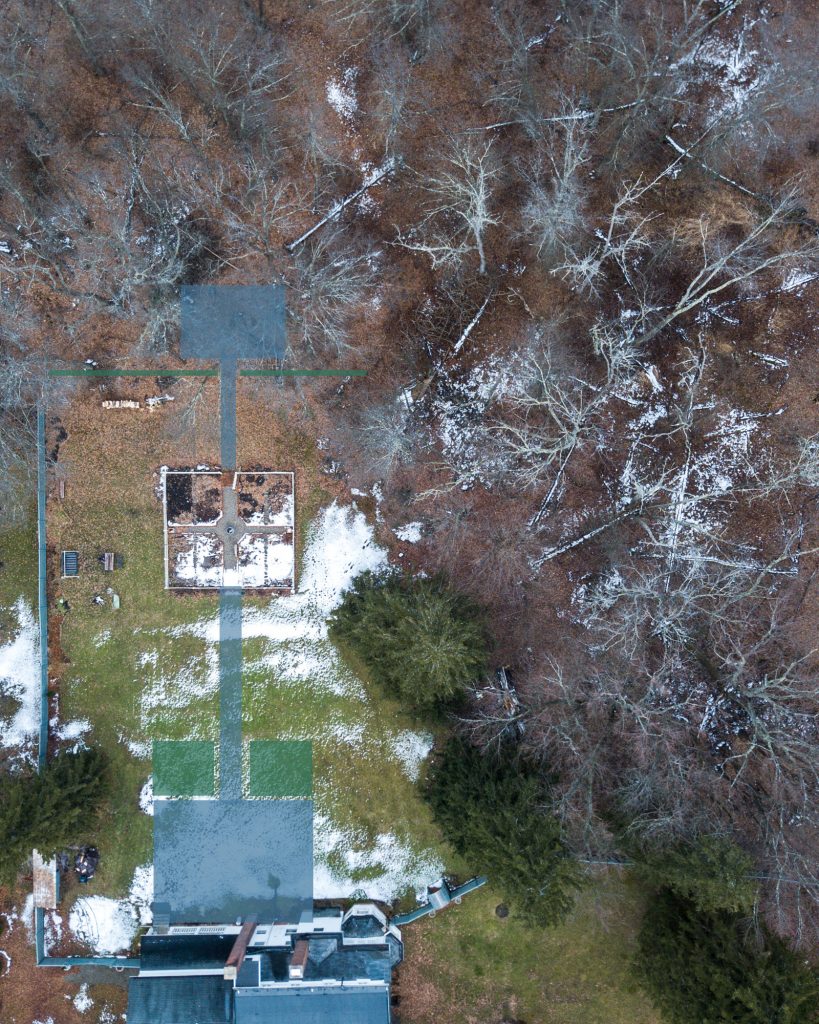
divide the space.
How we approached clearing the space
We started cutting down trees last season and took down the last few this year. Normally, I’m not a fan of cutting down trees, except we have very invasive maple trees and black walnut trees that self seed and chokes out all the other trees. We’re leaving trees, but taking away the crowding. When the trees are crowded, they grow tall and gangly, reaching for the light. Then a strong wind comes and the trees easily fall over. (See how many down trees there are in the drone image above?) Removing a few trees are key to maintaining the trees that we’d like to keep. Just last year, we cleared some overgrowth around the oak tree and it grew new branches!
The trees are cut and split for firewood. All the smaller branches are run through the chipper and the leaves are as well. We probably spent 40 hours chipping 7 years worth of tree debris. We’ll recycle this into the gardens as mulch. Some areas of the forest floor are a bit muddy after a hard rain, so we’re using the mulch to help with those damp areas.
Tools we used from Troy-Bilt
When we moved here from NYC seven years ago, I knew nothing of maintaining a property or gardening. (I could tell you subway directions from memory though!) All of this was completely new to us so I started researching online what tools we needed to get the job done.
The Chipper Shredder
We have so many branches and brush to clean up each season, the Chipper Shredder (CS4325) will help us clean it all up and have nice mulch to use in our garden beds. If you have a property with lots of trees or is overgrown and you want to clean it up, this is a game changer. The only thing we don’t put through the chipper shredder is invasive species we don’t want in our eco system and some gardening waste that doesn’t shred well. We have a lot of mature trees and have to walk around on “fallen branch duty” in the spring, so it will be helpful to chip those branches rather than have them lay around as an eye sore.
With our model, you can chip branches 3” in diameter or less, or you can put leaves with branches ½” in diameter or less through the larger opening on the top. This is the leaves mixed with small branches on the forest floor. When we clear trees or pick up branches in the spring, this covers most of what we have to clean up.
Someone asked me what to look for when you buy a chipper shredder on Instagram – great question! I looked for the largest branch size and a machine that took two types of material (both branches and leaf/branch mix). Review the reduction rate (this machine is 10/1). For instance if you start out with 10 bags of debris, the machine reduces it to one bag. If you’re looking at just leaf shredders, you’ll notice the reduction rate is higher (16/1) however if you’re looking at heavier duty chipper shredders the reduction rate won’t be as high because you’re shredding wood. Either way, you’ll get a usable material to mulch your garden beds with.
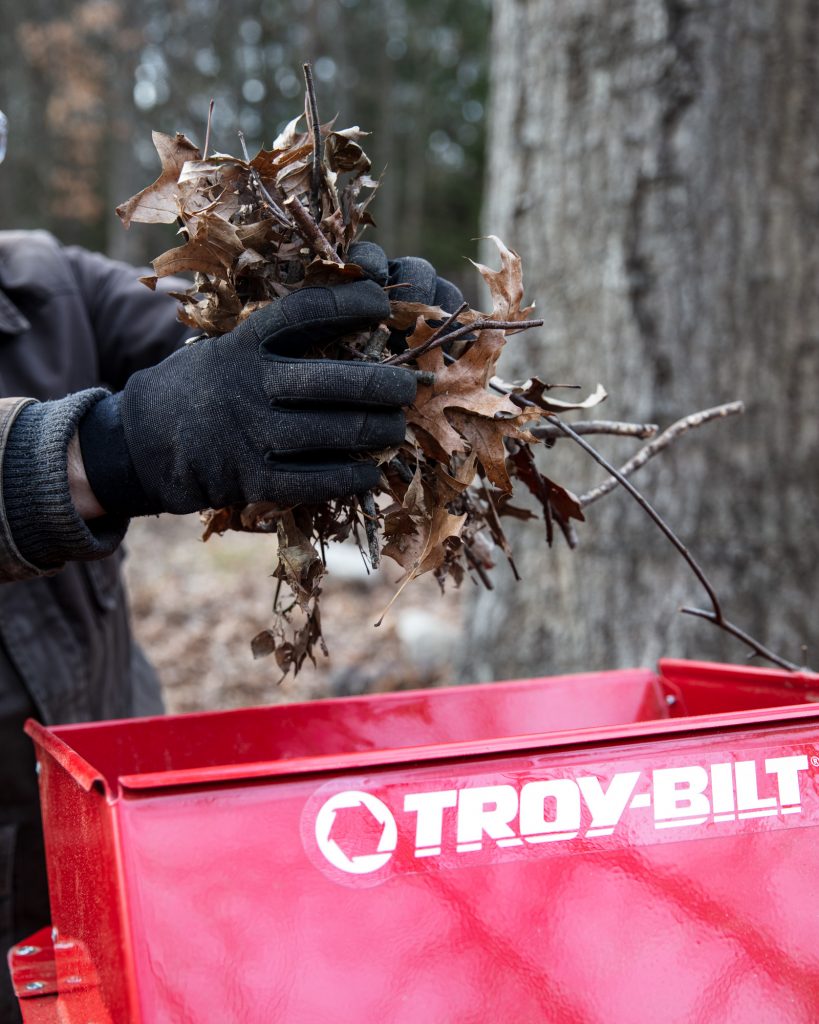
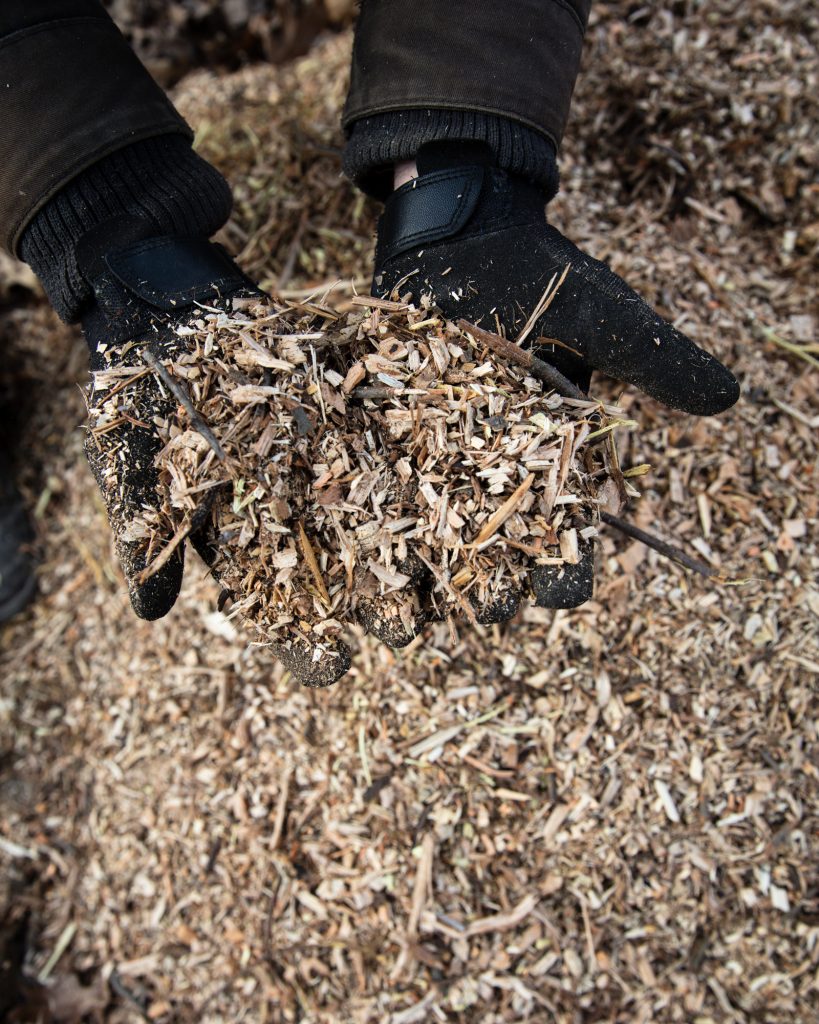
The Trimmer Mower
We wanted to try the Trimmer Mower (TB22) product to deal with the brush at the edge of the forest. We’ve been cutting it down in some areas by hand, and it’s way to time consuming. Plus one of the invasive species we have to cut down is Multi Flora Rose. It’s THE WORST. It has thorns so it’s really hard to get underneath the plant to cut it back. It’s wispy and thorny so it will sling back and smack you in the face. It’s terrible. I figured with the trimmer mower, I’d have the length of the whole machine to put it in front of me, rather than a string trimmer that’s only at arms length. The trimmer mower worked beautifully! It runs like a push mower, so it’s easy to get around. Once we do the initial cut down and burn barrel to get rid of the plant, it will try to grow back. We keep running the trimmer mower over it until the plant is exhausted and dies. It’s a simple, non-chemical strategy that you can use to do relatively large areas. Once we do the initial plant removal, it’s quick to maintain. We have to cut it back 3-4 times about two weeks apart for the plant to die. We did this in an area a few years ago and have had long term success. Once the beast of the multi flora rose is gone, I can plant some plants like hostas, ferns and hellebores.
While we used the Trimmer Mower to cut back brush, it would be good for any area you use a string trimmer but would be more comfortable to push a trimmer rather than walk around hand holding one. We have some long fences and flower beds I’ll try it on in the summer.
Wood Splitter
When we moved out of NYC years ago, Will’s Dad gave us a Troy-Bilt Wood Splitter. Our property had so many down trees and we needed firewood for the fireplace and fire pit. With so many acres, a wood splitter has come in really handy. It helps us clean up the forest and have firewood. We’ve been using a wood splitter for about 5 years. It can save you a lot of money on firewood if you use a lot of wood each year.

Next Steps!
We’ll start to lay the patio. We’re going to use pea gravel. We buy local salt and pepper pea gravel. We used it in the garden for the paths and in some areas in front of the house (drive way). The type of pea gravel we get locally compacts really well. We were shocked because we found it performed better than crushed item #4 in damp areas. I had researched pea gravel quite a bit and found mixed reviews online. If you’re planning to work with damp areas, I’d recommend some experimenting to see how well your local pea gravel compacts.
We’ll follow up with a post of the completed patio and share how we start using it right away even in the cold weather.
This post is sponsored by Troy-Bilt. Thank you for supporting the brands that provide support our blog. We hope you’re inspired.
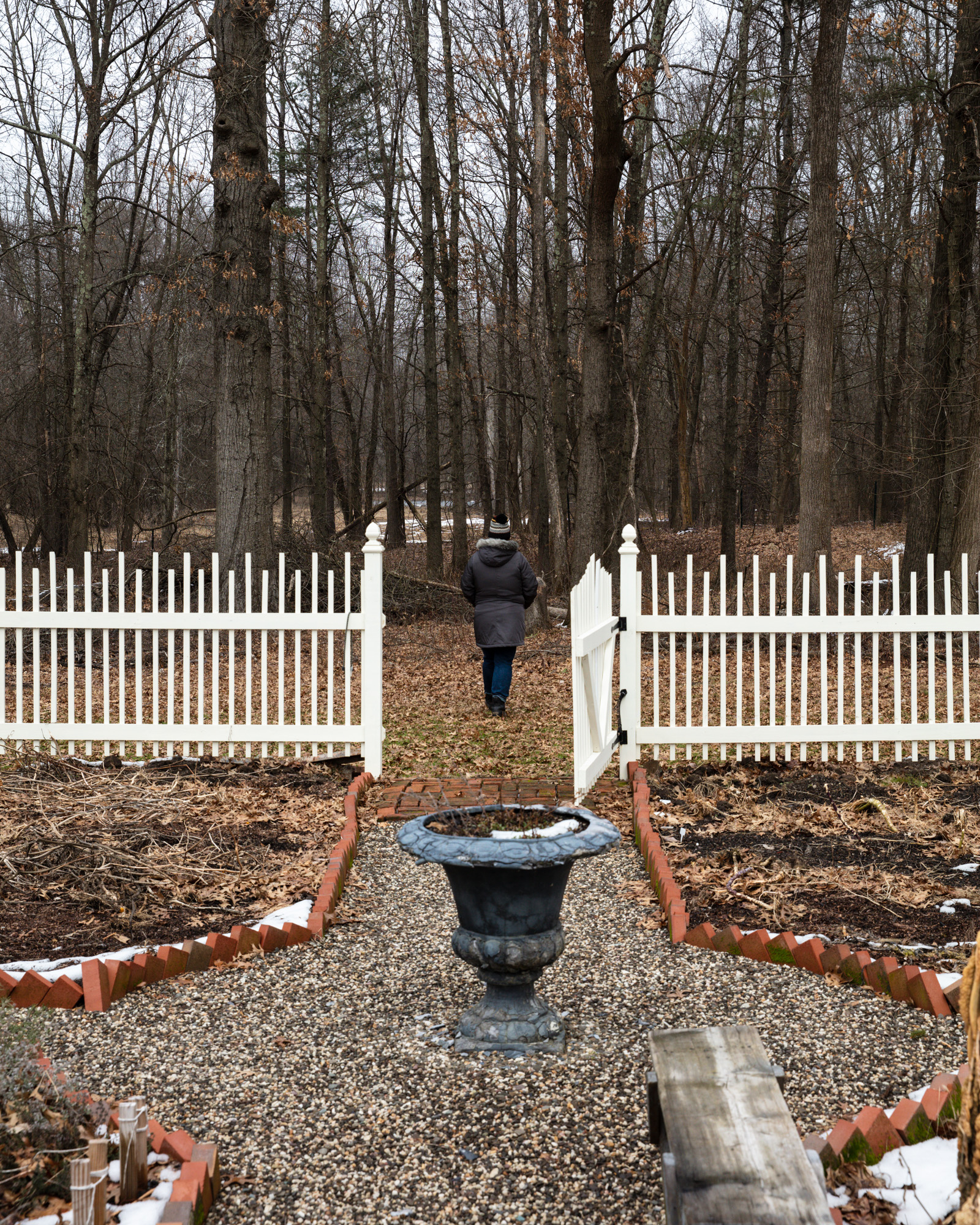
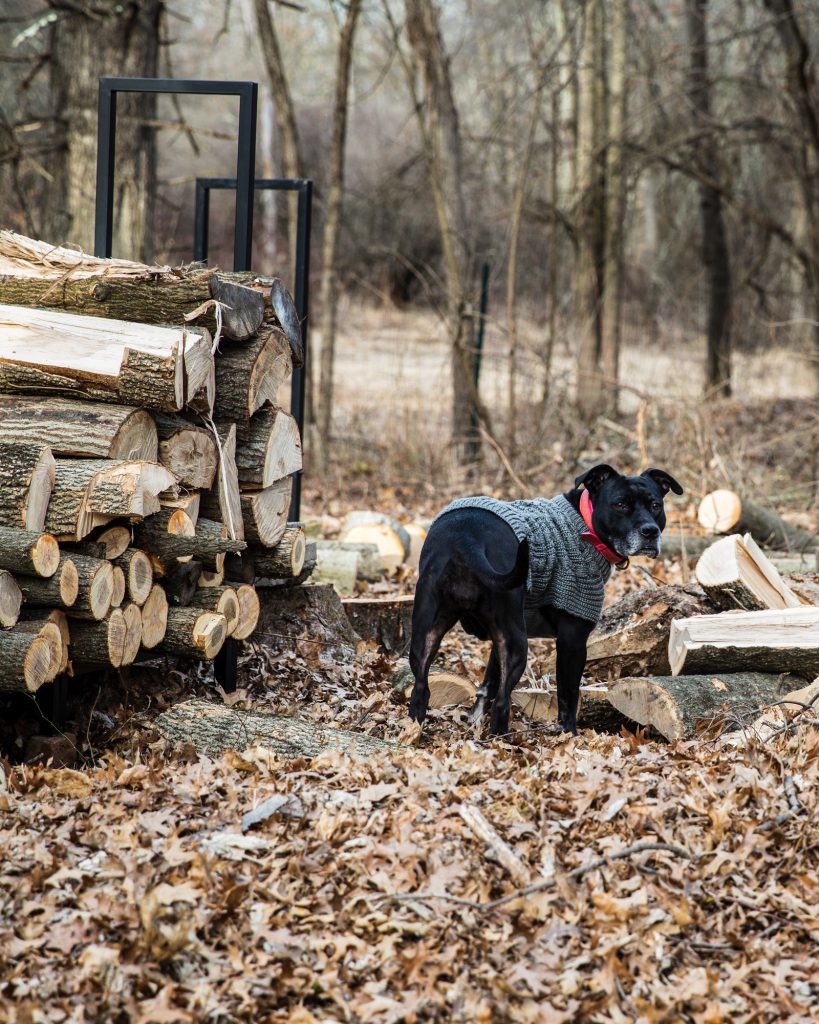
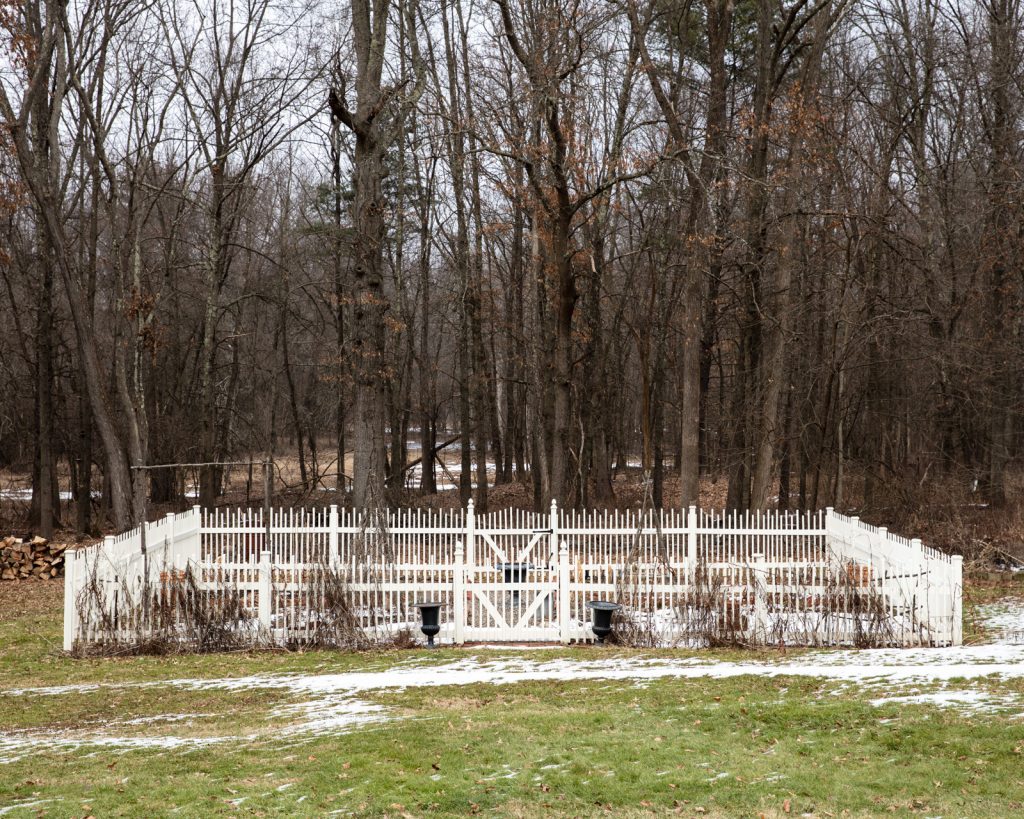
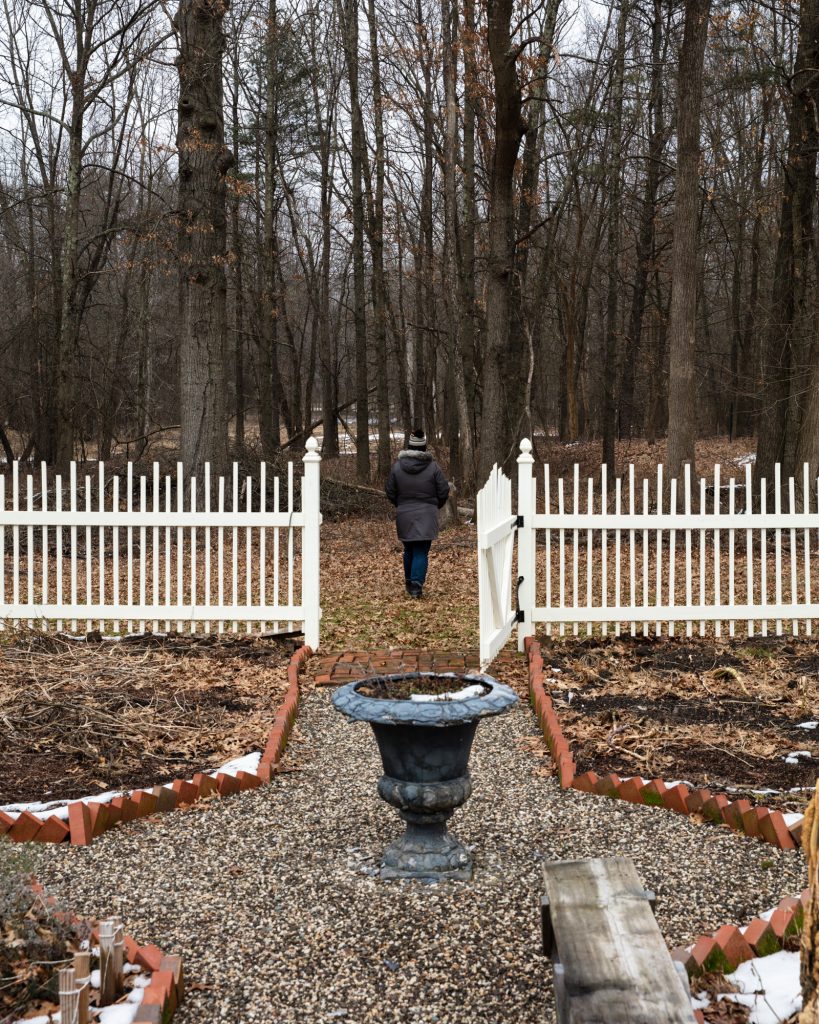
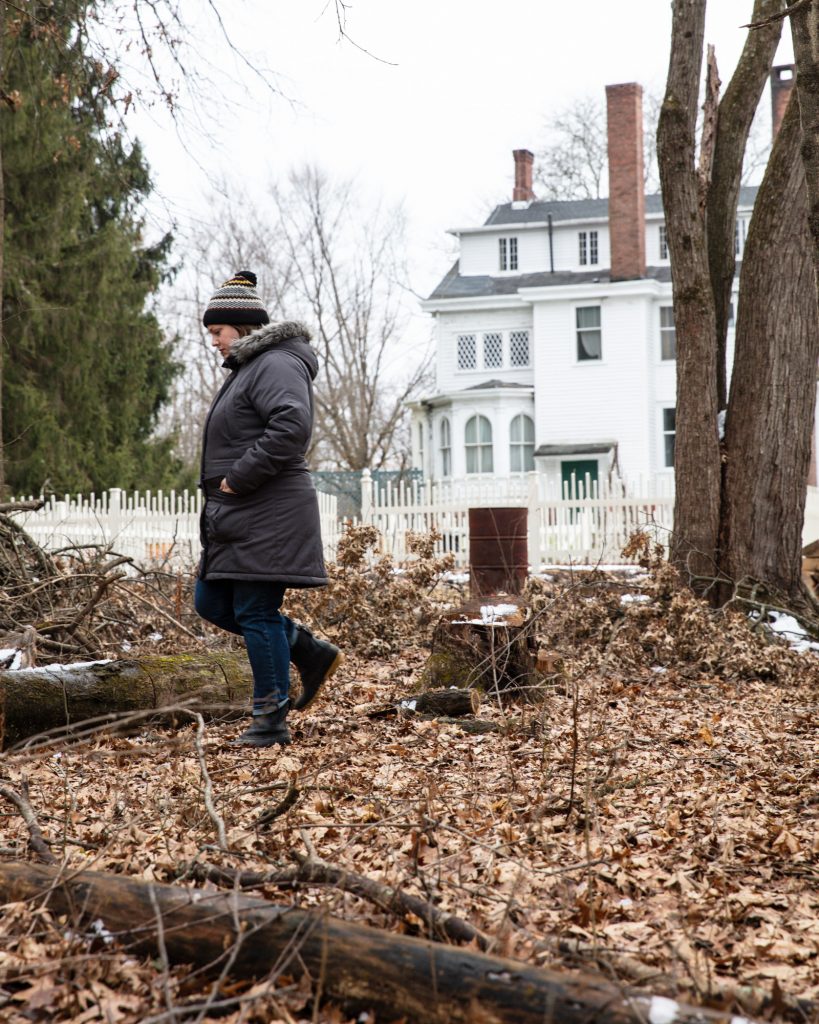
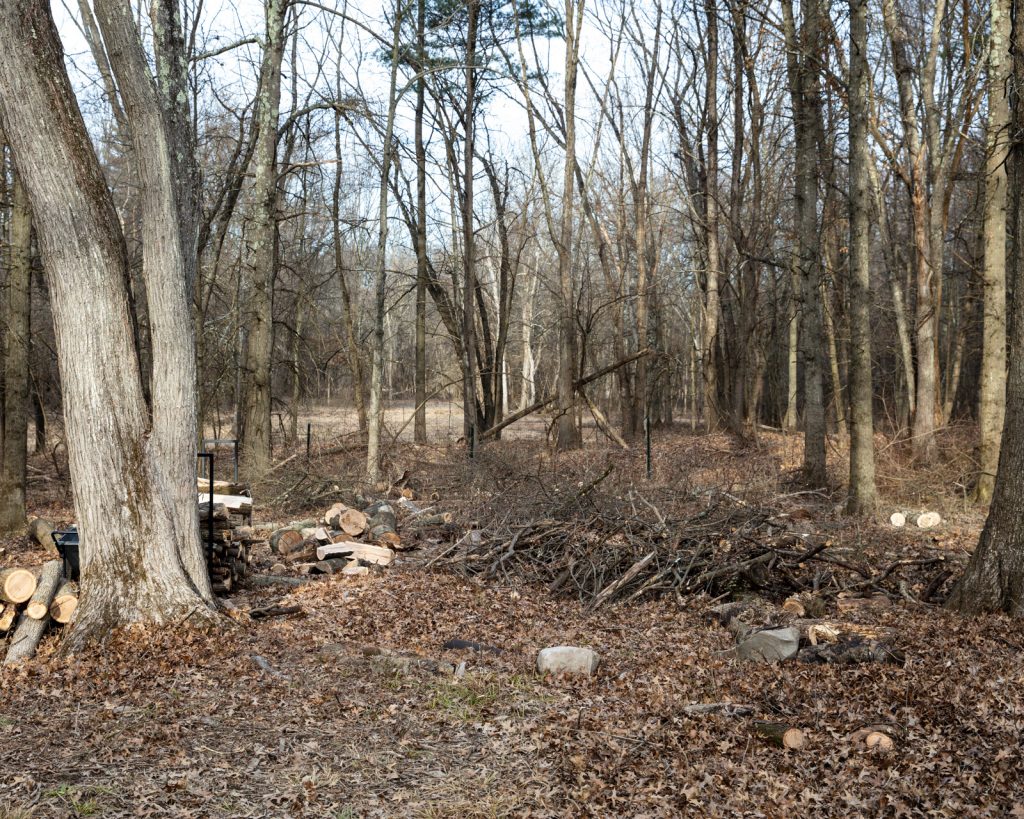
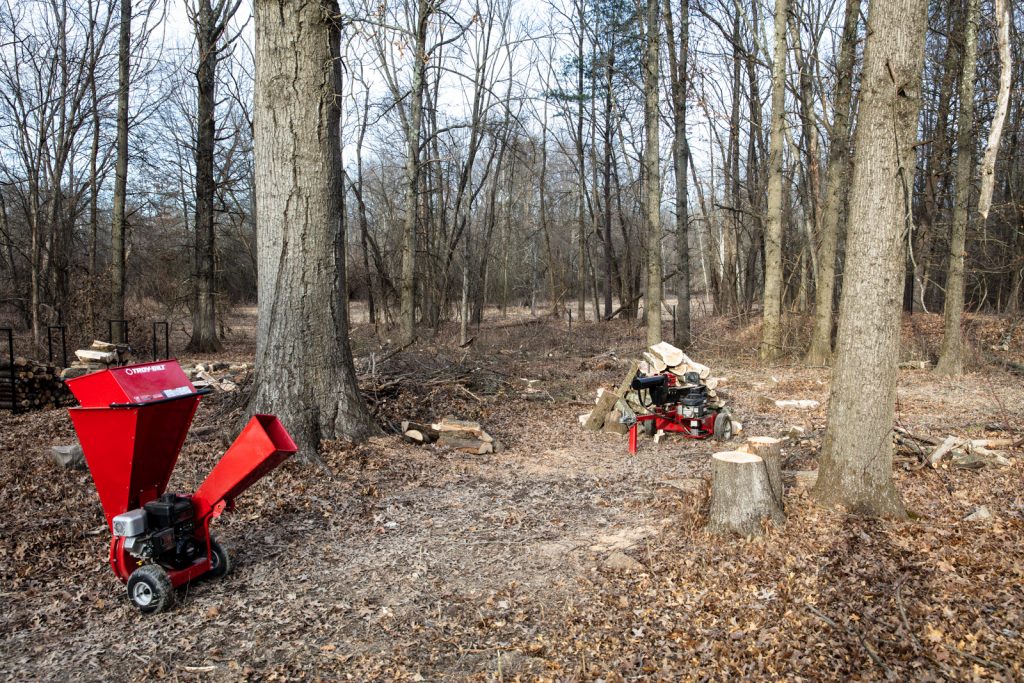
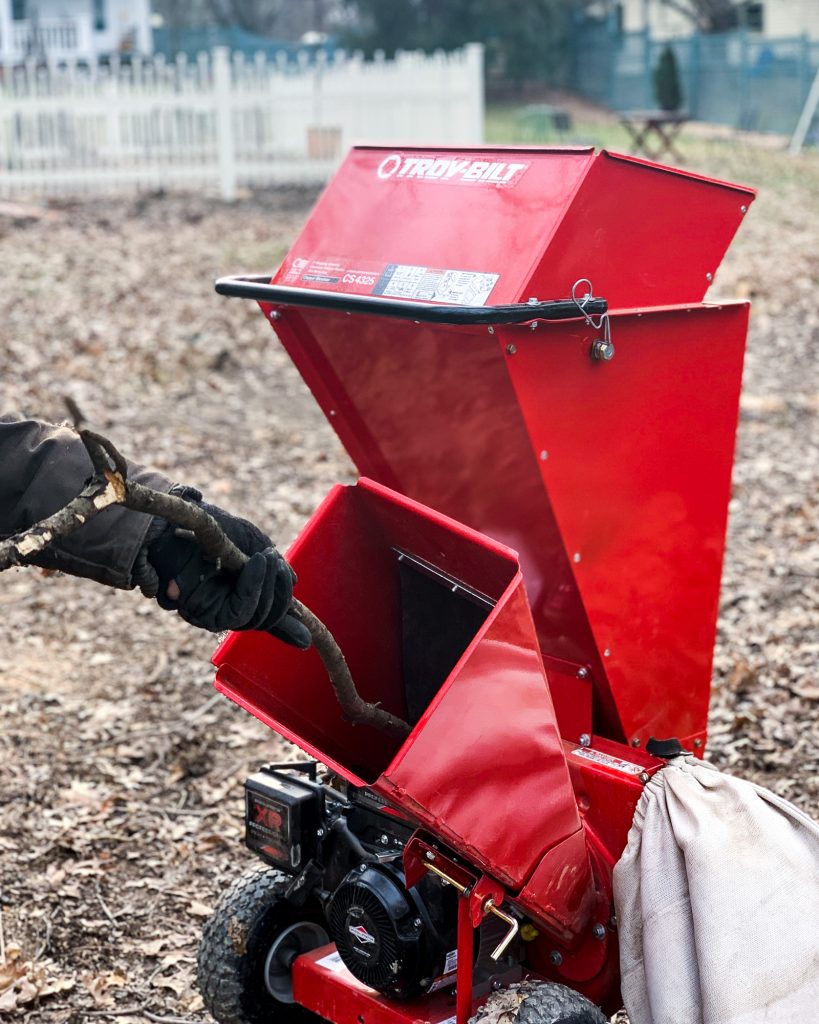
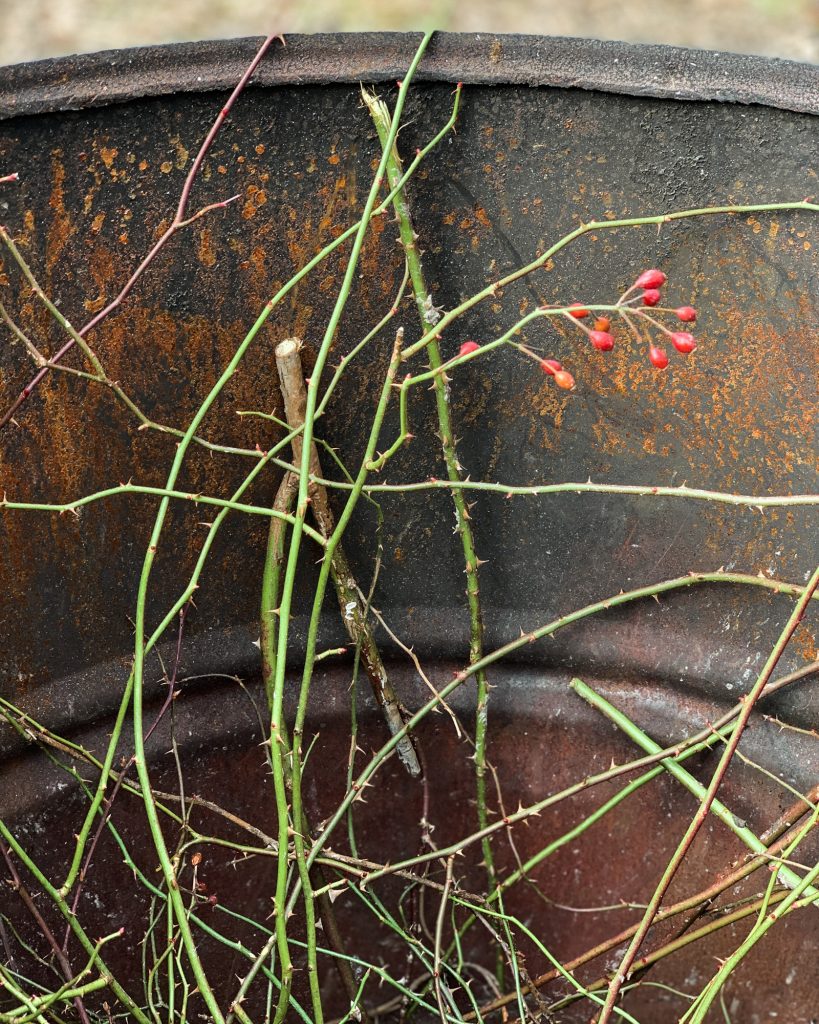

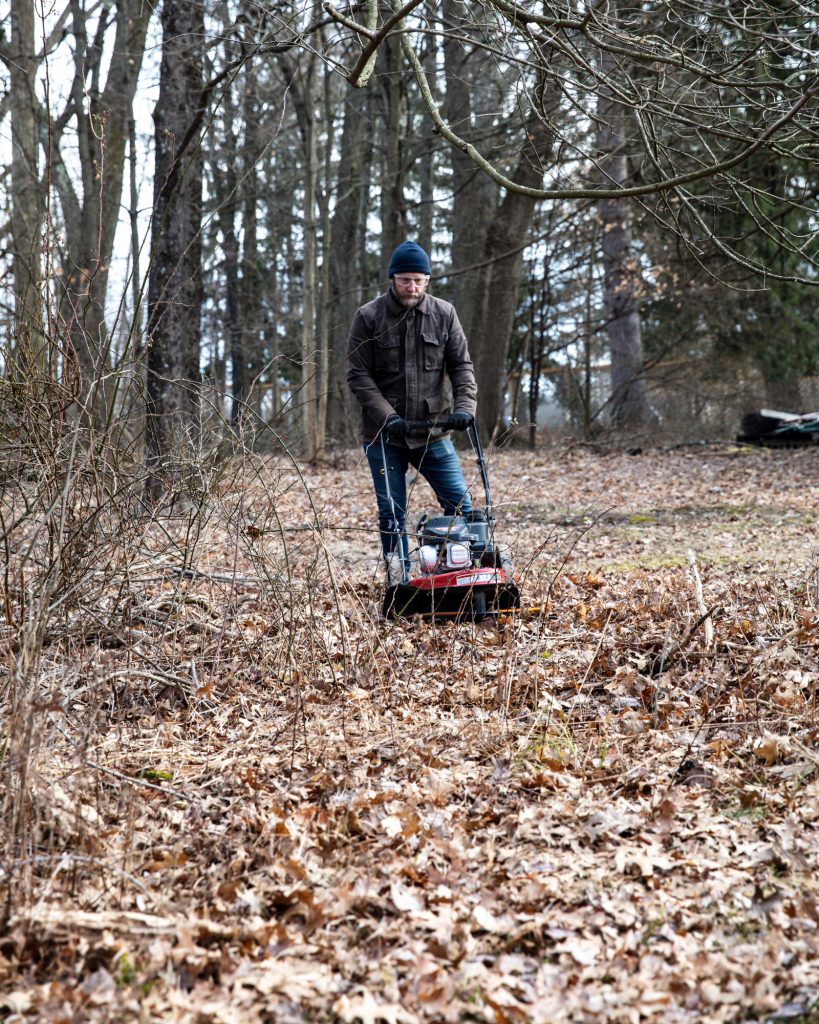

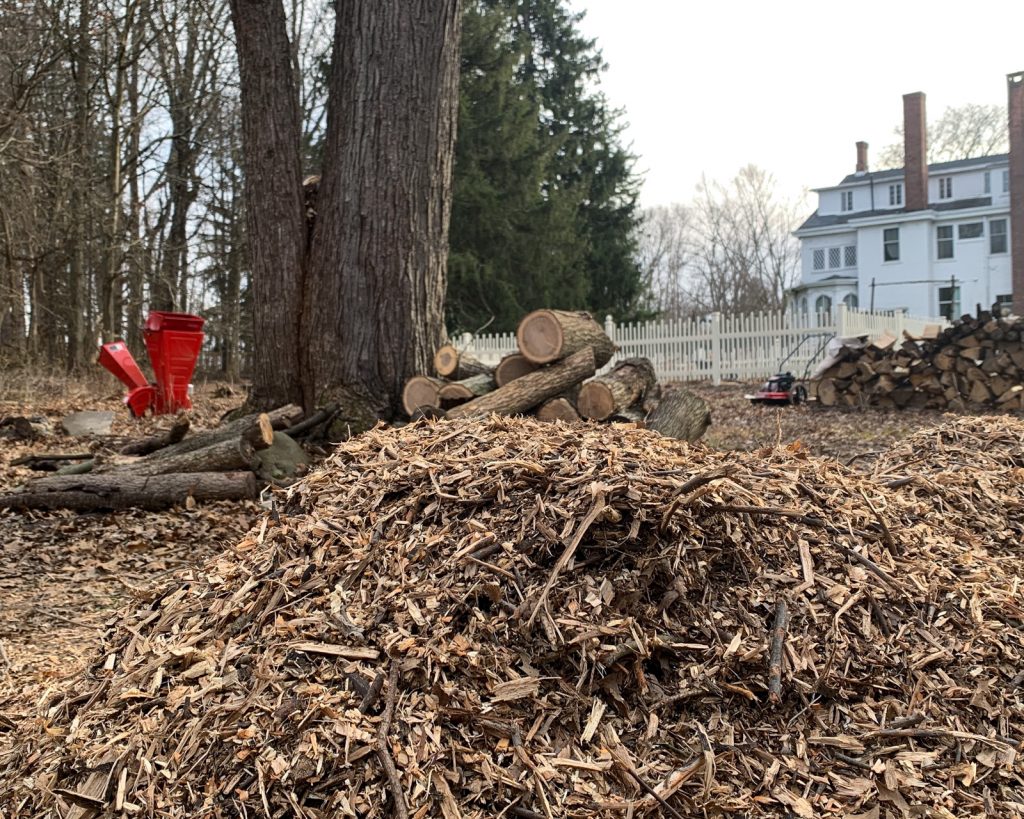



Couldn’t imagine a rose being invasive! So I looked it up and it sounds bad…plus it has thorns…ouch. It must be a huge task to remove it. My husband cleared entire hedges of thorny invasive bushes from around our property. He tried to cut it back and ended up scratched and bleeding from head to toe, so he finally sprayed it with a killer and that worked. Your project sounds great and I LOVE your home.